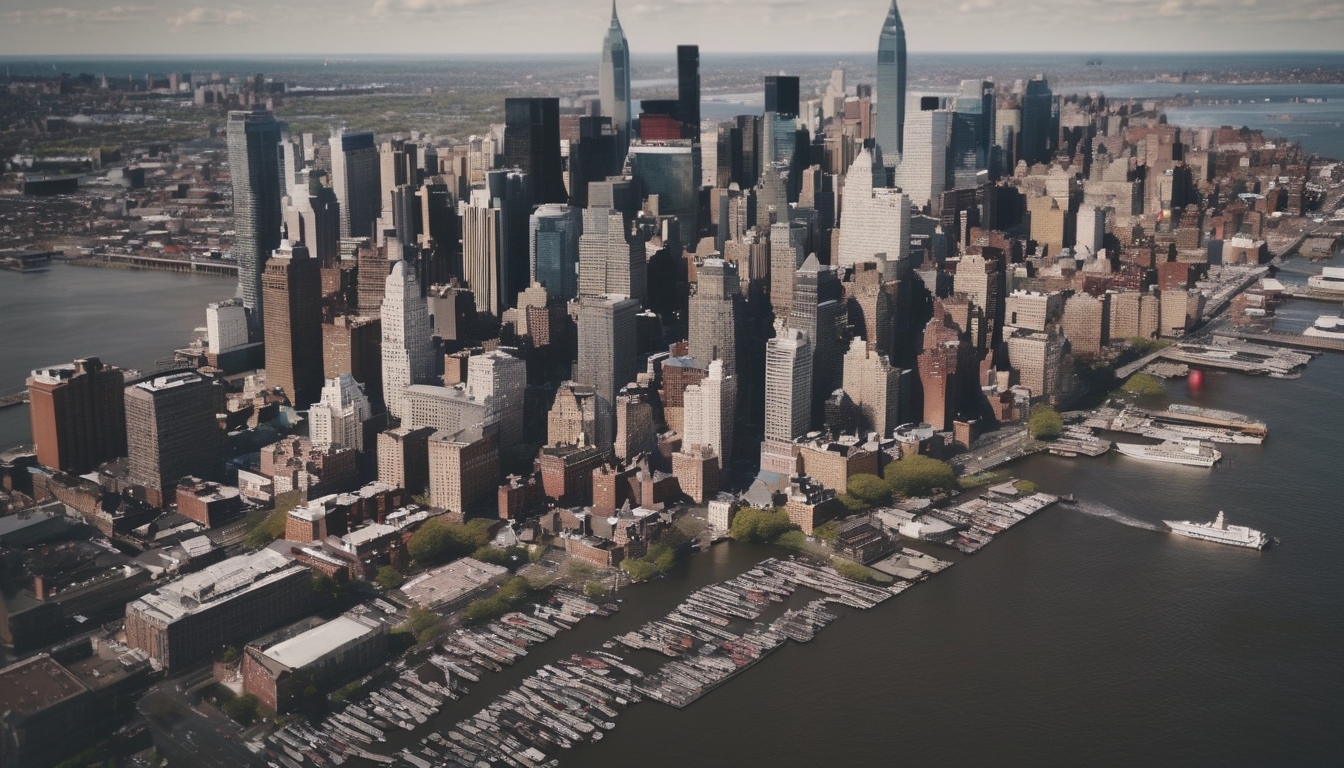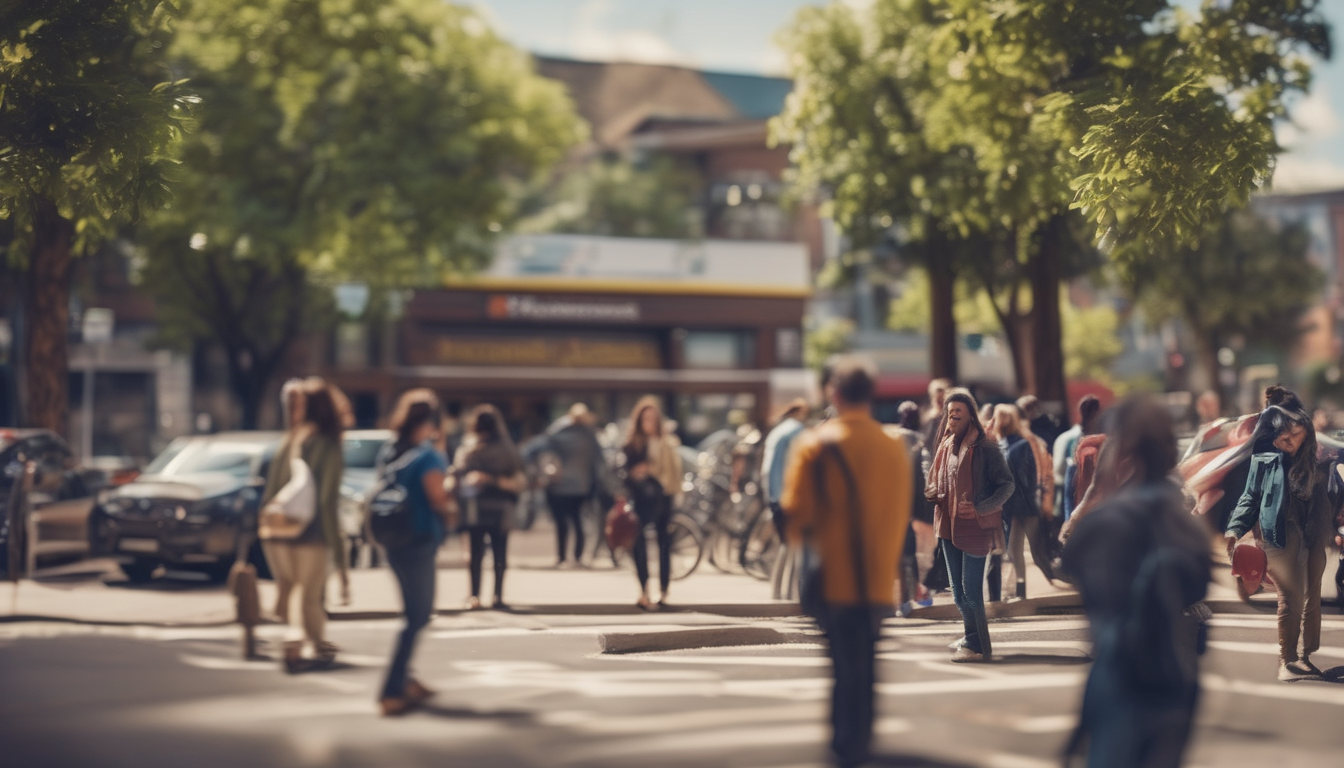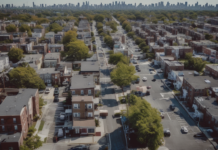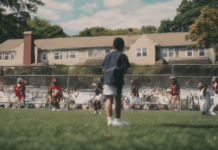If you are comparing Jersey City vs Queens: Better for Indonesian Immigrants?, one key difference is rent: as of November 2024, a two-bedroom flat in Jersey City averages about $2,700/month, while in Queens, the price is closer to $2,400/month, but commute times to Midtown Manhattan are typically 15–30 minutes longer from Jersey City. This matters because saving a few hundred dollars on rent in Jersey City may mean spending more time and money on transport, especially if you work in Manhattan.
As of November 2024, the Indonesian community in Queens, particularly around Elmhurst and Woodside, continues to grow, resulting in more Indonesian groceries, churches, and social events than you’ll find in Jersey City. However, Jersey City offers faster access to downtown Manhattan via the PATH train, and New Jersey’s driver’s licence process is currently more straightforward for new immigrants compared to New York State. Knowing where to get reliable legal or translation help can also be tricky; in Queens, Indonesian-specific services are easier to find, while Jersey City resources tend to serve a broader immigrant population.
This guide explains exactly how Jersey City vs Queens for Indonesian immigrants stacks up in terms of rent, commute, community resources, legal help, and daily life. You’ll see up-to-date comparisons, practical tips, and details on neighbourhoods where Indonesian newcomers feel most at home. If you need to decide where to settle and want the fastest path to affordable living, reliable Indonesian food, and supportive services, this guide provides the concrete answers you need.
Overview of Jersey City and Queens for Indonesian Immigrants

If you’re weighing up Jersey City vs Queens: Better for Indonesian Immigrants?, you’re not alone. After 25 years of watching newcomers chase dreams from Jackson Heights to Journal Square, I’ve learned there’s no single answer – it’s all about priorities. Queens, especially areas like Elmhurst and Jackson Heights, is NYC’s unofficial Indonesian hub, brimming with warungs, churches, and Bahasa speakers. But Jersey City’s Indonesian enclave around West Side Avenue has quietly grown, offering more space and slightly lower rents – though it’s still a far cry from “cheap” in 2024.
Transport’s the next headache. Jersey City’s PATH trains (Journal Square to 33rd in Manhattan) run 24/7, but a MetroCard won’t work – you’ll need a separate SmartLink card. Queens is all about the subway: the 7 train’s a lifeline, and you’re always a transfer from Manhattan. Commute times depend on which bit of either borough you land in. Most find Queens more walkable; Jersey City wins on parking and less elbow-to-elbow living.
| Borough | Rent (1BR) 2024 | Transit to Midtown | Indonesian Community |
|---|---|---|---|
| Queens (Elmhurst/Jackson Heights) | $2,400–$2,900 | 7 train (30–45 min) | Very strong |
| Jersey City (West Side) | $2,000–$2,500 | PATH (25–40 min) | Growing |
Cost of Living and Housing Options in Jersey City and Queens

Jersey City vs Queens: Better for Indonesian Immigrants? is a question I’ve heard debated in Jackson Heights coffee shops and on late-night PATH trains. After 25 years editing stories about newcomers chasing the American dream, I can tell you: both have their quirks, but the devil’s in the details. If you’re an Indonesian or Indian immigrant, your choice might boil down to what matters most—community, convenience, or cost.
- Queens: Especially in Elmhurst and Jackson Heights, you’ll find established Indonesian groceries (like Indo Java, 85-12 Queens Blvd) and mosques. The 7 train is your lifeline, whisking you into Midtown in under 30 minutes.
- Jersey City: Just one stop on the PATH from Manhattan, with a growing Indonesian enclave around Newark Avenue. Rents are softer than Manhattan but creeping up fast in 2024.
| Factor | Queens | Jersey City |
|---|---|---|
| Studio Rent (2024 avg.) | $2,100/mo | $1,800/mo |
| Transit to Midtown | 7 train (20-35 min) | PATH (15-25 min) |
| Indonesian Groceries | Multiple | Few |
| Community Size | Large | Growing |
Community Resources and Cultural Accessibility in Both Locations

Jersey City vs Queens: Better for Indonesian Immigrants? It’s a question I’ve heard at a dozen Jackson Heights street fairs and overheard on the PATH train at midnight. After 25 years covering New York’s shifting neighbourhoods, I can say: the answer depends on what you need, how you live, and whether you want your sambal closer to the Hudson or the East River. Both hubs have fiercely loyal Indonesian and Indian communities, but the daily grind, cost, and sense of “home” can differ more than you’d expect—even if it’s only two subway stops apart.
- Jersey City: Dense, walkable, fast-growing Indonesian scene around Newark Ave and Journal Square. Lower rent, but you’ll commute into Manhattan.
- Queens: Especially Elmhurst and Jackson Heights, is still the Indonesian heart of NYC—food, mosques, community events, and the 7 train at your doorstep.
Let’s break it down: in 2025, a two-bedroom in Jersey City averages $2,400/month near Journal Square (PATH station), while in Elmhurst you’ll find similar for $2,600, but with more Indonesian-run groceries and churches within a 10-minute stroll. The Queens office for city services (31-00 47th Ave, Court Sq station) processes most paperwork faster than Manhattan, but Jersey City City Hall (280 Grove St, Grove St PATH) is rarely crowded.
| Neighbourhood | Average Rent (2BR) | Nearest Subway/Train | Community Centres |
|---|---|---|---|
| Jersey City | $2,400 | Journal Sq (PATH) | Indo-American Comm. Center |
| Elmhurst, Queens | $2,600 | Jackson Hts–Roosevelt (7/E/F) | Masjid Al-Hikmah, Indo Java Groceries |
Employment Opportunities and Job Market Comparison

If you’re an Indonesian newcomer weighing up Jersey City vs Queens: Better for Indonesian Immigrants?, you’re not alone. After two decades of late-night coffee at Jackson Heights diners and endless reporting on newcomers’ journeys, I can tell you—each borough has its quirks, perks, and red tape. Jersey City’s Indonesian enclave around West Side Avenue has grown since the early 2000s, but Queens, especially Elmhurst and Woodside, still feels like the beating heart for Indonesian groceries, churches and quick access to Manhattan.
Housing costs? As of January 2025, a studio in Jersey City runs $1,800–$2,100/month, while in Queens, it’s $1,500–$1,850, though you’ll sacrifice some space and likely share walls with boisterous neighbours. Most find Queens’ subway access unbeatable: the 7, E, F, and R lines connect Elmhurst and Woodside to Midtown in under 30 minutes, whereas Jersey City’s PATH can be painfully crowded at rush hour.
| Neighbourhood | Monthly Rent (Studio) | Main Commute | Indonesian Community | |||||||||
|---|---|---|---|---|---|---|---|---|---|---|---|---|
| Jersey City | $1,800–$2,100 | PATH to Manhattan | Growing, tight-knit | |||||||||
| Queens (Elmhurst/Woodside) | $1,500–$1,850 | 7/E/F/R subways | Established, vibrant |
| Service | Queens | Jersey City |
|---|---|---|
| Language School Wait | 3–4 weeks | 1–2 weeks |
| Community Events | Monthly | Bi-monthly |
Factors to Consider When Choosing Between Jersey City and Queens

If you’re weighing Jersey City vs Queens: Better for Indonesian Immigrants?, you’re hardly alone. After 25 years in this city, I’ve watched countless newcomers agonise over this choice, especially families from Indonesia and India seeking better schools, real community, and a taste of home. Borough pride dies hard in New York, but practicalities often win the day. In 2024, both areas have strong Indonesian communities—think churches in Elmhurst and food markets on Newark Avenue—but subtle differences matter when you’re starting over.
Community, Culture, and Daily Life
Queens’ Elmhurst is legendary for its Indonesian churches, groceries, and warungs. You can hop off the E, F, M, R trains at Jackson Heights–Roosevelt Ave and be surrounded by familiar faces. Jersey City, meanwhile, offers space and slightly newer apartments—for a price. The PATH train at Journal Square connects you to Manhattan in under 20 minutes, but don’t expect the constant hum of Queens’ street vendors.
| Neighbourhood | Commute to Midtown | Rent for 1BR (2024) | Indonesian Centres |
|---|---|---|---|
| Elmhurst, Queens | 35 min (E/F/R) | $2,150/mo | Indo Java Groceries, HKBP Church |
| Journal Square, Jersey City | 20 min (PATH) | $2,400/mo | Indo American Store, ICC Mosque |
You now have a clearer understanding of the key differences between Jersey City and Queens for Indonesian immigrants, including cost of living, community support, and ease of access to amenities. With this knowledge, you can make more informed decisions about where to settle, saving time and potential relocation costs in the process.
Your first step is to visit the neighbourhoods in person if possible, to get a feel for the environment and community vibe. Planning a visit within the next few weeks can help you assess which area aligns best with your needs and preferences.
Have questions or need further guidance? Share your thoughts in the comments below. For more detailed information on settling in NYC as an Indonesian immigrant, check our comprehensive guide on indonewyork.com.














